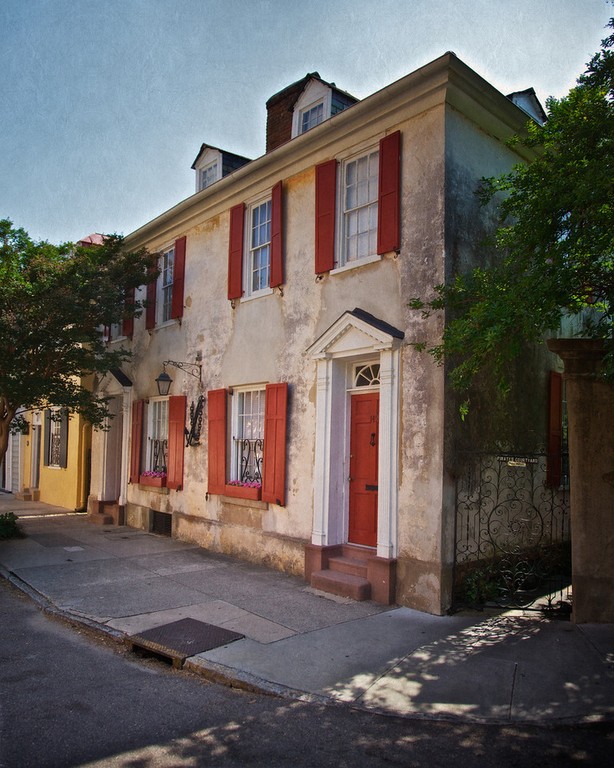Pirate House
Introduction
Text-to-speech Audio
The Pirate House located on Church Street in the French Quarter of downtown Charleston, SC was built in the early part of 1700 during a time when pirates were known to have roamed and threatened the area, hence the anchor that resides on the front of the house. The house is situated right next to cemetery at St. Philip's Episcopal Church. There is a very small alley between the house and the cemetery that leads to the courtyard of Pirate House. The house is a three story very plain looking house with a brilliant history. Tunnels were also said to have ran under the Pirate House connecting to the Dock Street Theatre and harbor. However, these tunnels were destroyed during the creation of the sewer system in Charleston. There are still remnants of the tunnel entrance ways near the theatre and under the archways in the basement of Pirate House.
The house is said to have been a hotbed of activity during the 1700s. The house was used as a boarding house, gambling center, and a trading post for smuggled goods. During this time period high tariffs were placed on imported goods and purchasing these goods was almost impossibly expensive. Therefore these types of Black-market trading posts sprung up everywhere. The types of “merchants” trading this contraband were mostly pirates in this area and time period. What makes Pirate House interesting it that the infamous Blackbeard was said to have stayed here. Blackbeard was the pirate who actually blockaded the Charleston Harbor and demanded medicine. However, there has been little to no evidence to support that Blackbeard ever actually stepped foot in Charleston let alone stayed at Pirate House. Nevertheless, the house was used to trade contraband and often entertained the occasional vagabond and pirate.
The Pirate House is a great example of legends changing historical facts. Even though there is scant evidence to support the wild historical claims of Pirate House, people still firmly believe its history. This house is more a novelty than important historical point. However, this house is essential to the history of Charleston because it does represent a time when pirating and Black markets were common and imperative to understanding their culture. The essence of Charleston's culture comes from these legends as well as their factual history.
Images
Pirate House Exterior

